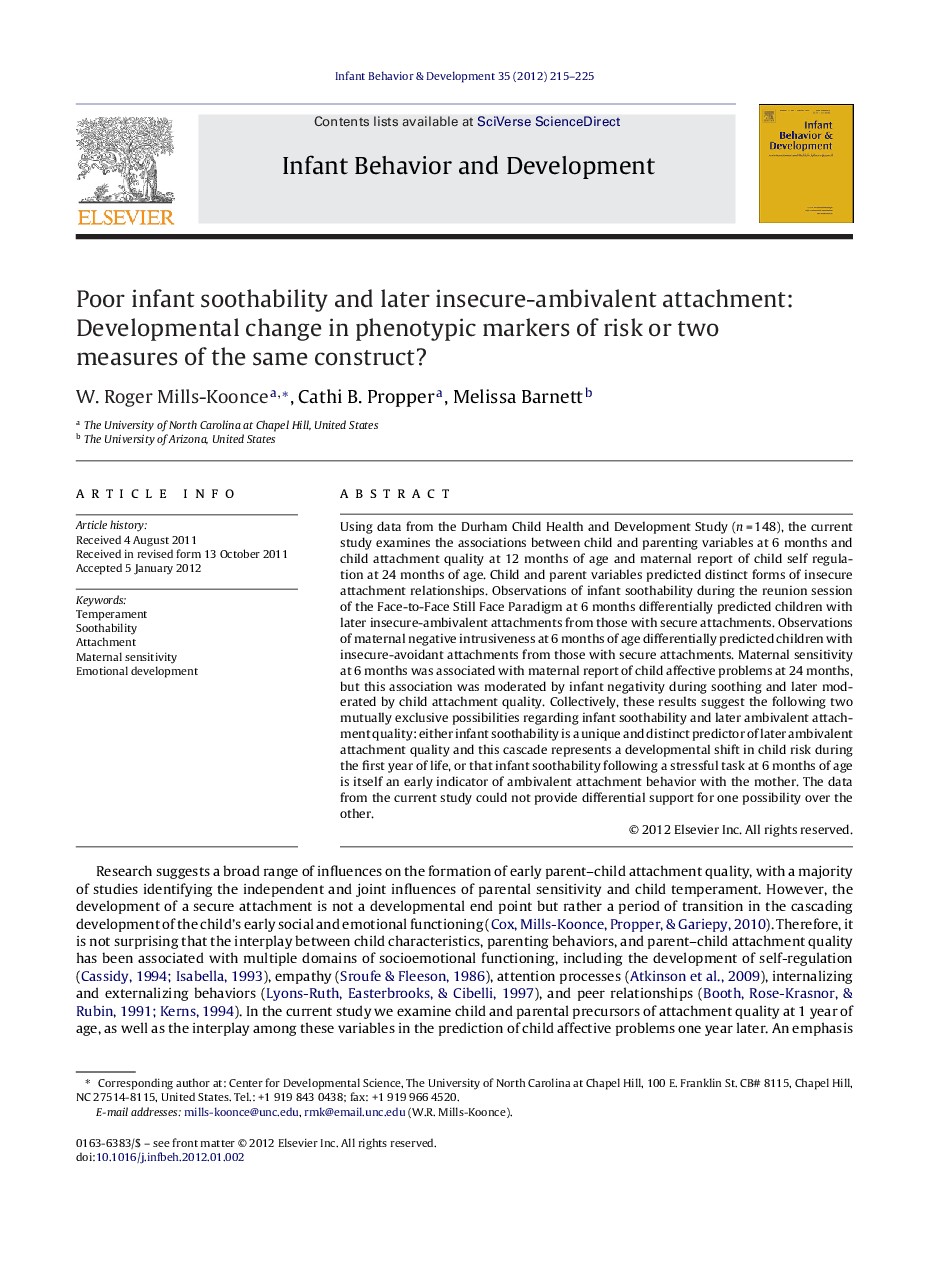| Article ID | Journal | Published Year | Pages | File Type |
|---|---|---|---|---|
| 917444 | Infant Behavior and Development | 2012 | 11 Pages |
Using data from the Durham Child Health and Development Study (n = 148), the current study examines the associations between child and parenting variables at 6 months and child attachment quality at 12 months of age and maternal report of child self regulation at 24 months of age. Child and parent variables predicted distinct forms of insecure attachment relationships. Observations of infant soothability during the reunion session of the Face-to-Face Still Face Paradigm at 6 months differentially predicted children with later insecure-ambivalent attachments from those with secure attachments. Observations of maternal negative intrusiveness at 6 months of age differentially predicted children with insecure-avoidant attachments from those with secure attachments. Maternal sensitivity at 6 months was associated with maternal report of child affective problems at 24 months, but this association was moderated by infant negativity during soothing and later moderated by child attachment quality. Collectively, these results suggest the following two mutually exclusive possibilities regarding infant soothability and later ambivalent attachment quality: either infant soothability is a unique and distinct predictor of later ambivalent attachment quality and this cascade represents a developmental shift in child risk during the first year of life, or that infant soothability following a stressful task at 6 months of age is itself an early indicator of ambivalent attachment behavior with the mother. The data from the current study could not provide differential support for one possibility over the other.
► Maternal negative intrusiveness differentiated insecure-avoidant attachment; only observer rated child soothability (not maternal report or other observations of child negativity in other contexts) differentiate insecure-ambivalent attachment. ► Maternal sensitivity was negatively associated with later child affective problems only for children who were low in observed soothability at 6 months. Similarly, maternal sensitivity was negatively associated with later affective problems only for children with insecure-ambivalent attachments at 12 months. ► If poor soothability is an early manifestation of later ambivalent-attachment, then the current findings may provide evidence for a developmental shift in phenotypic markers of risk and sensitivity to environmental influence on developmental processes. Conversely, low soothability at 6 months of age may be an early behavioral manifestation of child ambivalence or resistance at this age.
